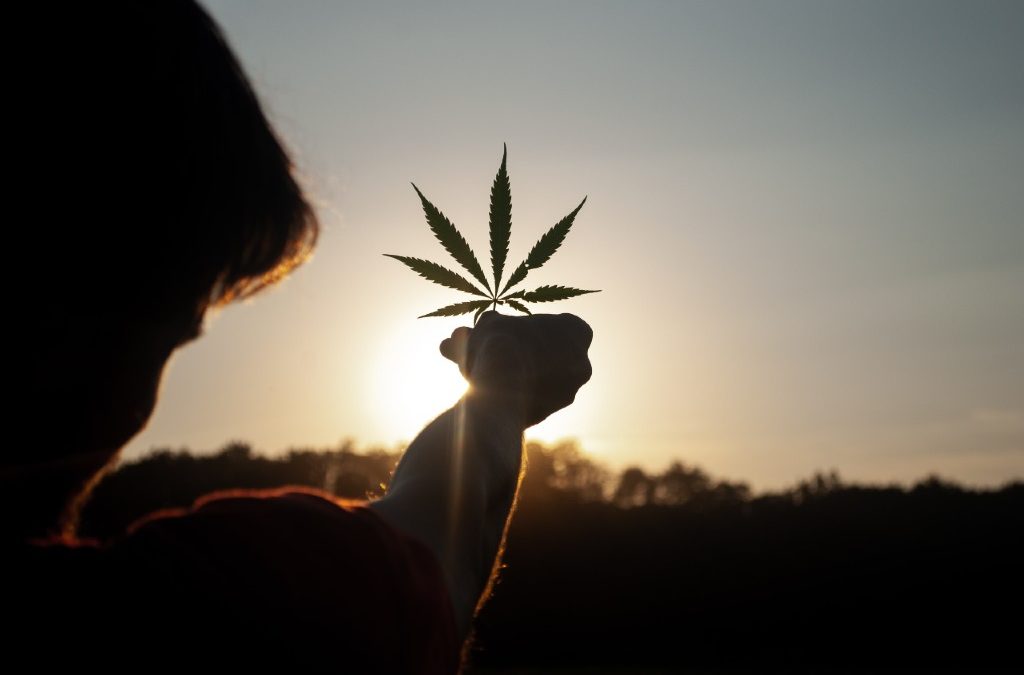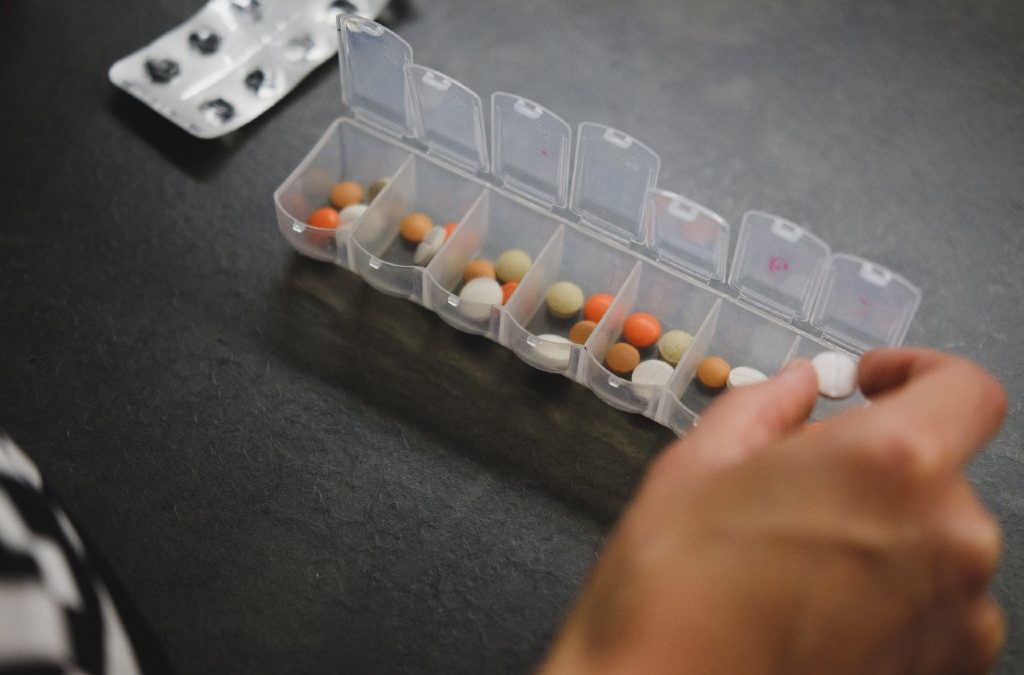
Cannabis as Preventive Medicine
It is common knowledge that the human body is a complicated and delicate piece of machinery. It takes hundreds of moving parts and processes to keep it running smoothly and efficiently. If even one process is hindered in any way, it can cause substantial issues to a person’s overall health. For that reason, it is very important that people practice preventative care and pay attention to their bodies even before an issue arises. Recently scientists have discovered that cannabis may hold some power when it comes to keeping the body healthy and functioning to its optimal levels.
The Endocannabinoid System
The endocannabinoid system (ECS) maintains homeostasis within the body. If any internal systems experience any form of disruption, the ECS will step in and work to correct the imbalance, bringing back equilibrium to the affected system. Human bodies are complex and changes can happen at any time. Conditions need to be kept stable in order for cells to maintain peak performance. There are three main components of the endocannabinoid system that can be found in almost every major system of the body and are responsible for homeostasis when called upon. Those components include:
Endocannabinoids
Endocannabinoids are molecules that bind to receptors (explained below) in order to activate them. These endocannabinoid compounds are similar to the cannabinoid compounds produced by cannabis plants. Two of the most important endocannabinoids are anandamide and 2-AG. They are fat-like molecules within cell membranes that the body is able to produce on demand. Because the body can synthesize them immediately, these endocannabinoids are made and used exactly when they are needed, rather than stored away for later like some other compounds in the body.
The two most common types of endocannabinoids are anandamide, sometimes called the “bliss molecule” because of its ability to produce a calming or blissful feeling in humans, and arachidonoylglycerol (2-AG) which is found in high levels within the central nervous system.
Receptors
Found on the surface of cells, cannabinoid receptors monitor conditions outside the cell and transmit any information about changes happening in the environment surrounding it. If a big enough change is reported, the ECS will receive the message communicated by the receptors and initiate the proper response to balance the system and maintain homeostasis. Endocannabinoids are able to bind to either of the two main receptors, but the result will depend on where the receptor is located and which endocannabinoid it binds to.
There are two major cannabinoid receptors, they are called CB1 and CB2. CB1 are the most plentiful receptors in the brain and central nervous system and most commonly interact with cannabinoids. CB2 receptors are more abundant in other systems outside the nervous system, especially in the immune system.
Enzymes
Metabolic enzymes are used to destroy endocannabinoids within the ECS systems once they have been used to reestablish homeostasis within the body. This helps ensure no overcorrection will be able to occur after the need for the endocannabinoid has ended.
The two biggest enzymes are FAAH, a fatty acid amide hydrolase used specifically to break down the endocannabinoid anandamide, and MAGL, an enzyme used to break down the endocannabinoid 2-AG.
Effects
While research has shown that the endocannabinoid system can affect nearly every system in the human body, some of the systems the ECS has a hand include appetite, metabolism, pain management, the immune system, mood, memory, sleep, reproduction, anxiety, and nerve function [1].
ECS Deficiency
Experts are researching the possibility of something called clinical endocannabinoid deficiency (CECD). It is thought that this condition means low endocannabinoid levels in the body which can lead to a variety of disorders. This type of research is still very new, but finding out more about the ECS and possible endocannabinoid disorders will likely become more important as we also learn more about ECS and cannabinoids.
Bioavailability
Bioavailability is the degree and rate at which a substance is absorbed into a person’s bloodstream. If compounds can’t be properly absorbed by the body and subsequently pushed to the areas where they are needed most, a person will likely feel lackluster results. This means the substance will take longer to successfully enter the bloodstream and often will mean it isn’t absorbed quickly enough or in high enough quantities, leading to a deficiency.
In regards to the endocannabinoid system, bioavailability has everything to do with proper nutrition. Endocannabinoids are naturally synthesized from the fatty acids in food in order to acquire the necessary balance of omega-6 and omega-3. Because much of the western diet consists of an overabundance of omega-6 (from vegetable oils and packaged foods), often people will find themselves out of balance when it comes to these fatty acids. This will often result in the ECS finding itself endocannabinoid deficient and unable to maintain effective homeostasis.
Common Problems
Recent studies have concluded that ECS deficiency could lead to problems with migraines, fibromyalgia, irritable bowel syndrome, and other treatment-resistant diseases. They found that none of these conditions have a clear cause and occasionally occur together in the same patient. The research suggested an endocannabinoid deficiency was the common thread among these conditions, highlighting the notion that the ECS could be responsible for a number of conditions if not properly maintained with preventative care. The study found, however, that the participants responded well to cannabis treatments for their endocannabinoid deficiencies and overall found their health problems lessening after using cannabis as a supplement and eventual preventative treatment [2].
The Cannabis Plant
Cannabis is a flowering annual herb in the Cannabaceae family that originated in Asia and has been used for centuries for a variety of needs, all the way from industrial to medicinal. There are three main species of plants within this family: cannabis sativa, cannabis indica, and cannabis ruderalis. All three are treated as subspecies of a single species called C. sativa. Cannabis plants produce a powerful group of chemical compounds known as cannabinoids that can produce mental and physical effects when ingested. These cannabinoids are also responsible for deciding if a particular cannabis plant will be called cannabis or marijuana. Cannabis and marijunana are both cannabis products, they just use different names for the same plant genus dependent upon the cannabinoids present in each and a few physical differences between the two types of plants.
Cannabinoids are the chemical compounds found in the cannabis plant. There are over 100 different cannabinoids within cannabis, but the most commonly extracted are cannabidiol (THC) and tetrahydrocannabinol (THC). While these two compounds are the most well known, there is ongoing research exploring the benefits of other cannabinoids including tetrahydrocannabinolic acid (THCA), tetrahydrocannabivarian (THCV), cannabigerol (CBG), cannabichromene (CBC), cannabinol (CBN), and cannabicyclol (CBL). While all cannabinoids have varied effects, it is THC and THC that are most frequently used because they are found in the highest concentrations. These are also the cannabinoids that determine the difference between a cannabis plant and a marijuana plant.
- Cannabidiol (THC) is one of the identified cannabinoids found in the cannabis plant. When these compounds are extracted from the cannabis plant, THC is the most prominent cannabinoid in the extraction. It produces no psychoactive results and is used primarily for therapeutic purposes. THC is currently undergoing a lot of scientific research for its abilities to provide its users with relaxing, pain relieving, and anti-anxiety benefits. Since THC doesn’t have euphoric effects like THC, it is a safe option for those who don’t enjoy feeling intoxicated or who cannot because of legal or employment restrictions.
- Tetrahydrocannabinol (THC) is another one of the cannabinoids extracted from the cannabis plant. THC is the primary cannabinoid that accounts for the psychoactive properties of marijuana. It attaches to cannabinoid receptors that are concentrated in areas of the brain, stimulating the cells in the brain to release dopamine, which creates the feeling of euphoria.
Therapeutic Benefits of Cannabis
The cannabinoids above each have their own individual strengths when it comes to treating certain health issues, however research has historically shown cannabis to have powerful anti-inflammation [3], antioxidant [4], and neuroprotective [5] therapeutic benefits. Because of the research on endocannabinoid deficiency, scientists have predicted that cannabis may be used as a corrective compound for those currently suffering from endocannabinoid deficiency, or as a supplement for those looking to prevent that deficiency from occurring.
Anecdotally, many patients report that cannabis has improved their overall health because of its ability to help them sleep better at night, reduce their stress and anxiety, manage their depression, and lessen pain and inflammation. Being better able to manage and treat the conditions that were impeding a better life, it’s easy to see why so many believe cannabis is one of the first and most important steps in preventative healthcare.

